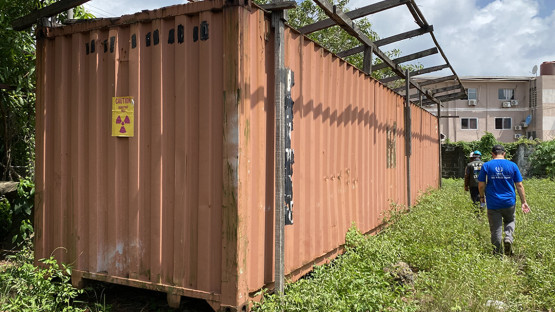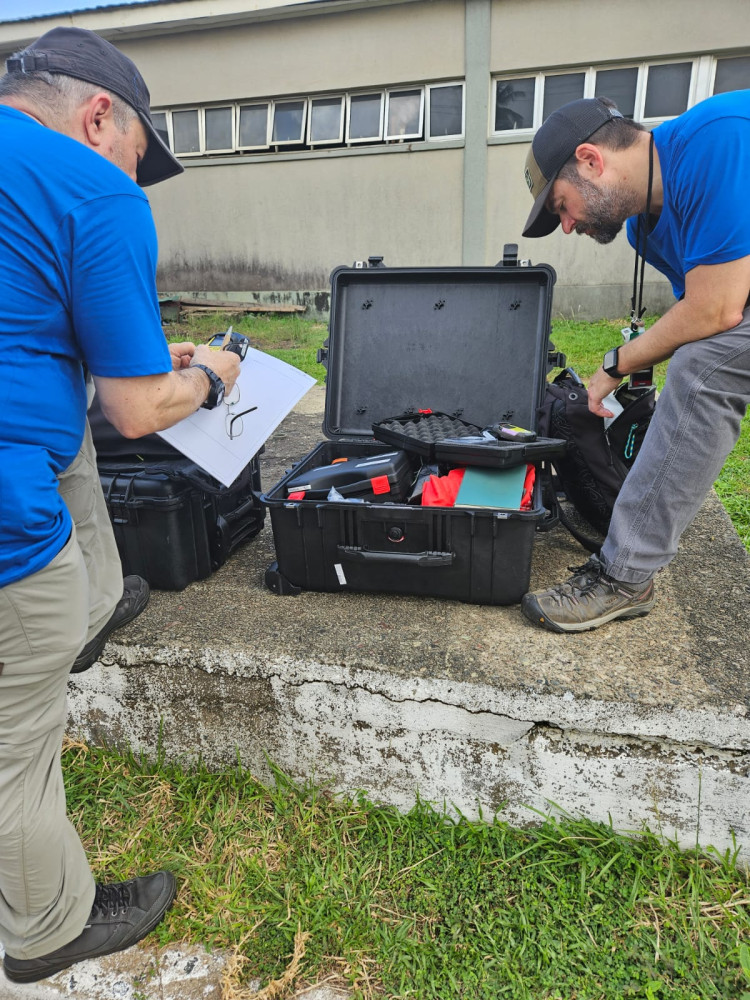Posts Categories
Latest Posts

Liberia has moved to fast track its accession to nuclear safety treaties, after IAEA experts helped prevent a radiological incident from shutting down the country’s main hospital.
In May 2024, the Environmental Protection Agency of Liberia reached out to the IAEA’s Incident and Emergency Centre (IEC) for assistance after staff detected an unidentified radioactive source in a maintenance room at the John F. Kennedy Medical Centre in Monrovia.
If the source had not been managed swiftly, it could have led to significant disruptions, adversely impacting thousands of patients.
The IAEA developed a plan and deployed a fact-finding mission team comprising the IEC response system coordinator and a disused sealed sources specialist, who arrived in Monrovia on 21 May. By the following day, the source was secured and the hospital could continue its work uninterrupted.
Liberia’s request for assistance was made pursuant to the operational arrangements under the framework of the Convention on Assistance in the Case of a Nuclear Accident or Radiological Emergency, which sets out an international framework for co-operation between State Parties and the IAEA to facilitate prompt support. Liberia was not a party to this convention at the time but joined it and five other IAEA legal instruments at the IAEA 68th General Conference.
“The Assistance Convention does not mandate that only parties may receive international assistance. Emergencies are events which overwhelm available resources for response. Even a relatively minor event can become an emergency in the absence of the appropriate resources and training,” explained Florian Baciu, IAEA Response System Coordinator in the Department of Nuclear Safety and Security. “International assistance is therefore available to any State which requires it, to mitigate the impact of a nuclear or radiological emergency on their territory.”
In Monrovia, the IAEA mission’s objective was to prevent the temporary closure of the JFK Medical Centre, an essential facility for the country’s healthcare. The radioactive source, identified as Caesium-137, is an artificially produced radionuclide widely used in medical and other fields. The team surmised that the source belonged to a disused brachytherapy machine. Brachytherapy is a type of internal radiation therapy that uses radiation sources to treat tumours. The machine had likely been placed in the hospital’s scrap metal facility after it was decommissioned. This incident highlighted the need for proper handling and disposal of radioactive sources in the country, especially for disused medicine equipment.
During the mission, the IAEA team conducted a detailed radiation survey, confirmed the isotope was Caesium-137, and safely removed the source from a stormwater drain in the former scrap metal facility – which is now the hospital’s maintenance room. The source was then secured in a shielding container provided by the Liberian Environmental Protection Agency (EPA) and transported to a secure storage location. The IAEA team also completed a radiological survey of the area and concluded that it was extremely unlikely that anyone had been exposed to levels of radiation high enough to cause health problems. This rapid response helped to alleviate anxiety in members of the public and the hospital staff, and to address misinformation about the potential hazards to health as a result of the incident.
The Executive Director of the EPA, Emmanuel K. Urey Yarkpawolo said: “The prompt assistance provided by the IAEA demonstrates the Agency’s commitment to building nuclear safety frameworks and supporting Member States in assessing and addressing their unique needs and urgencies. The mission did not only address the immediate concerns of the Liberia Government, but also underscored a proactive approach to preventing small issues from escalating to bigger problems. The quick response by the IAEA during our time of need further highlights the broader scope of the Agency’s work which transcends beyond emergency response to encompass comprehensive assistance.”
Baciu agreed: “The collaboration with the local authorities was seamless, and their proactive approach facilitated this swift action. Our goal is to provide countries with support to ensure that they are able to respond effectively to any type of emergency, irrespective of scale. We also encourage more States to join the IAEA’s Assistance Convention, as this allows for quick and formal communication channels to receive assistance and support promptly.”

IAEA Fact Finding Mission team members conducting a radiation survey and preparing equipment at the JFK Medical Centre during the recovery of a Cs-137 radioactive source from a storm water sump in the hospital’s maintenance room. (Photo: Liberian Environmental Protection Agency).
The IAEA and the Liberian EPA will work together to define ways in which the IAEA can help ensure that all radioactive sources in the country are used and disposed of safely and securely. Among the projects under discussion are assistance to establish a national registry of radiological sources, training for Liberian experts on managing sealed radioactive sources, the provision of equipment and other assistance, improving facilities for nuclear and radiological emergencies, and strengthening the safe and secure management of radioactive sources in Liberia. The IAEA will also continue to support Liberia through its technical cooperation programme, providing training and resources to enhance the country’s capability in the safe and secure management of radioactive sources.�
